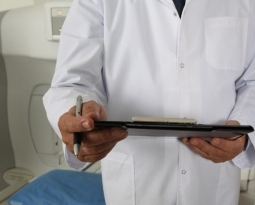Florida dedicating $19.5 million to Space Florida
The Department of Transportation in Florida are investing $17 million for the Launch Complex 36, which will be home to Blue Origin’s New Glenn reusable rocket launches.
Blue Origin’s founder, Amazon and Washington Post owner Jeff Bezos, originally announced the plan to use the location in September 2015. Bezos said his company would match the government’s contributions, bringing the total budget for refurbishing the launch complex to $34 million.
Two new rocket models late last year have been announced by Blue Origin, which will be named after the late astronaut John Glenn. Glenn became the first American to ever orbit the Earth in 1962. Blue Origin will open a 750,000 sq. ft. factory for the production and development of new rockets at the Kennedy Space Center in the future, with a goal start date of 2018. Blue Origin has committed to spending $200 million on the facility and is hoping to employ upwards of 330 people from the local economy.
During a public announcement of the project in September 2015, Bezos said “We’re not just launching here, we’re building here,” Florida Governor Rick Scott attended the meeting, where Bezos continued, “Our ultimate vision is millions of people living and working in space.”
The budget includes $19.5 million for “operations and job creation funding for Space Florida,” the public agency within the state department for transportation which deals with the local space industry around Cape Canaveral. It is estmiated the $19.5 million would be divvied up as follows; $10 million for operations, $7 million for new business financing, $1.5 for space-related tourism (as opposed to actually exploring above the atmosphere), and $1 million to beef up R&D in a partnership with Israel.
Recently, Bezos provided an email update regarding the development of the company’s new BE-4 rocket engine. The email addressed some of the progress Blue Origin had made in its design.
Bezos stated “For even more performance, you can add one or more boost pumps ahead of the main pumps. We’ve done that on the oxidizer side of our BE-4 engine. Our Ox Boost Pump (OBP) design leverages 3-D additive manufacturing to make many of the key components,”. He noted the second iteration of the OBP was now being tested.
“The housing is a single printed aluminum part and all of the stages of the hydraulic turbine are printed from Monel, a nickel alloy. This manufacturing approach allows the integration of complex internal flow passages in the housing that would be much more difficult to make using conventional methods. The turbine nozzles and rotors are also 3-D printed and require minimum machining to achieve the required fits.”

















